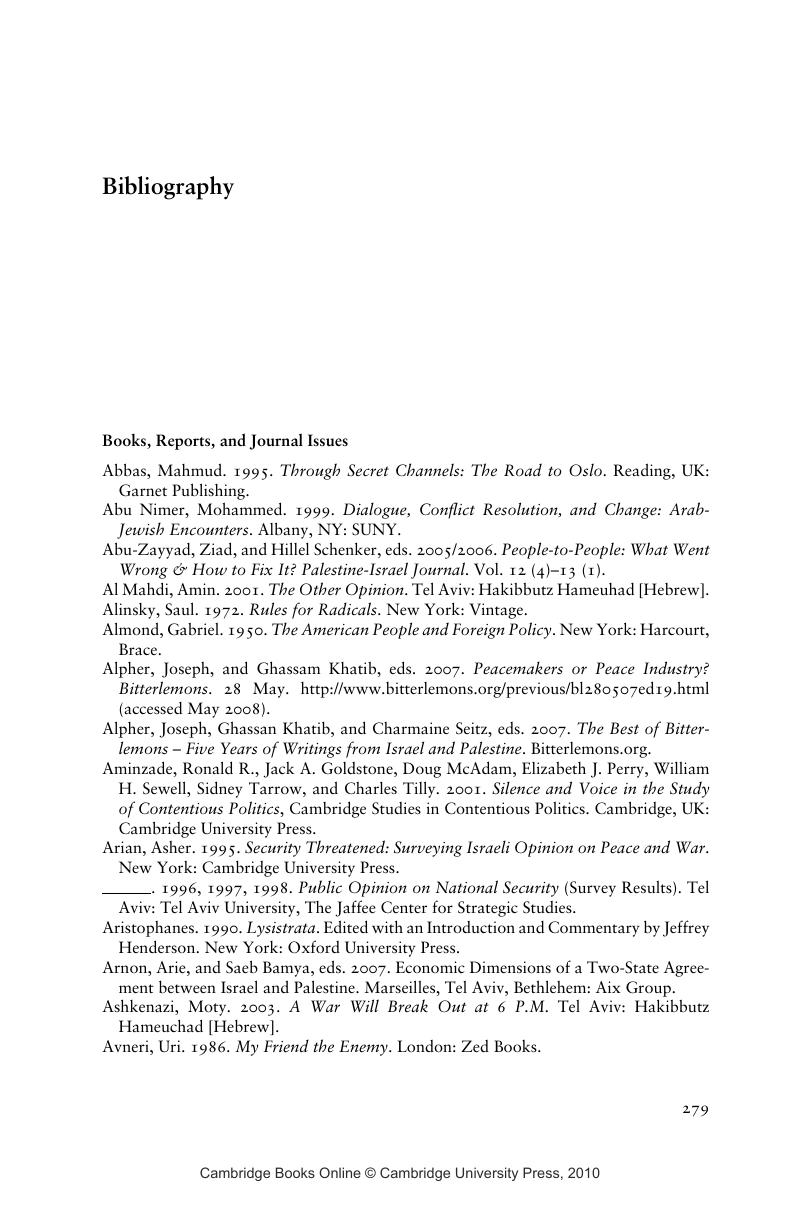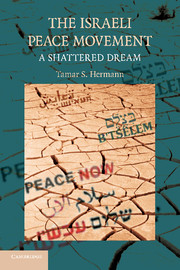Book contents
- Frontmatter
- Contents
- Acknowledgments
- 1 Introduction
- 2 Exploring Peace Activism – A Road Map
- 3 Mapping the Israeli Sociopolitical Terrain
- 4 Paving the Road to Oslo – Israeli Peace Activism through 1993
- 5 The Path Strewn with Obstacles (1993–2008)
- 6 A Path Finder – Exploring New Ways or Getting Lost?
- Appendix 1 List of Israeli Peace Groups
- Appendix 2 Israeli Jewish Public Opinion on the Oslo Process (1994–2008)
- Bibliography
- Index
- References
Bibliography
Published online by Cambridge University Press: 08 January 2010
- Frontmatter
- Contents
- Acknowledgments
- 1 Introduction
- 2 Exploring Peace Activism – A Road Map
- 3 Mapping the Israeli Sociopolitical Terrain
- 4 Paving the Road to Oslo – Israeli Peace Activism through 1993
- 5 The Path Strewn with Obstacles (1993–2008)
- 6 A Path Finder – Exploring New Ways or Getting Lost?
- Appendix 1 List of Israeli Peace Groups
- Appendix 2 Israeli Jewish Public Opinion on the Oslo Process (1994–2008)
- Bibliography
- Index
- References
Summary

- Type
- Chapter
- Information
- The Israeli Peace MovementA Shattered Dream, pp. 279 - 304Publisher: Cambridge University PressPrint publication year: 2009



